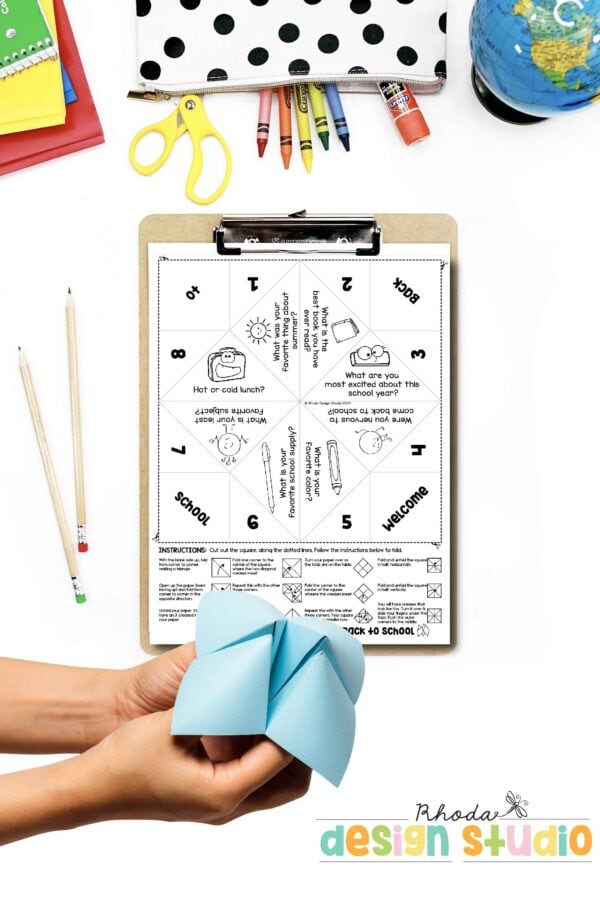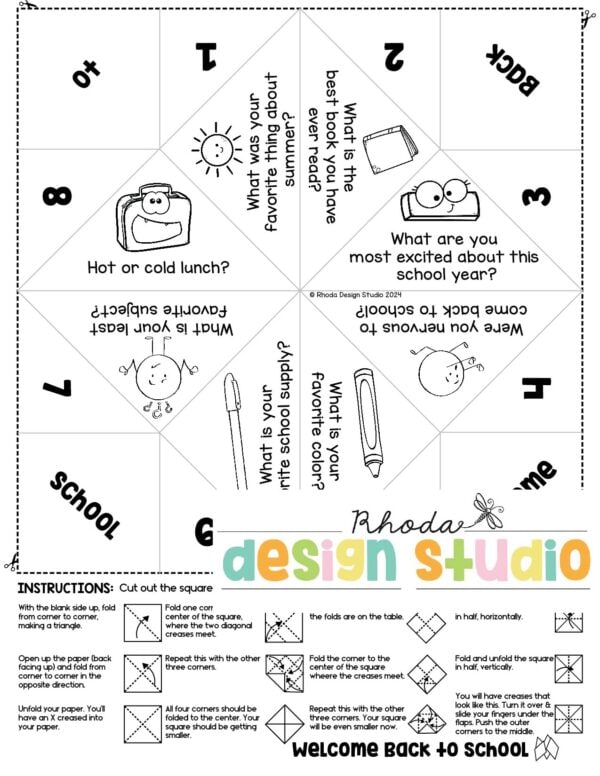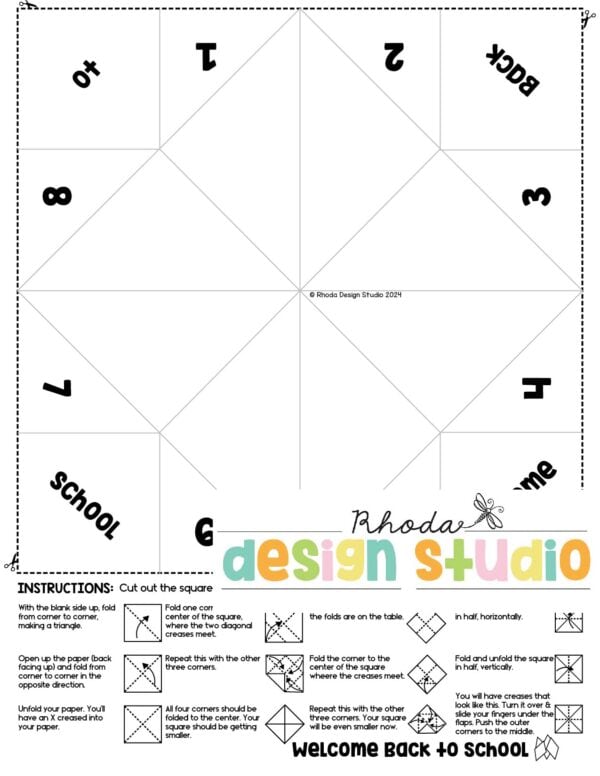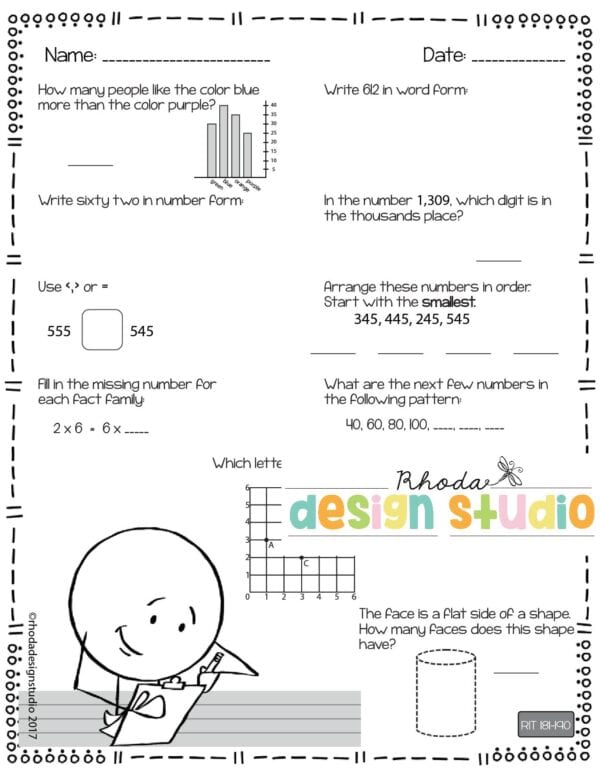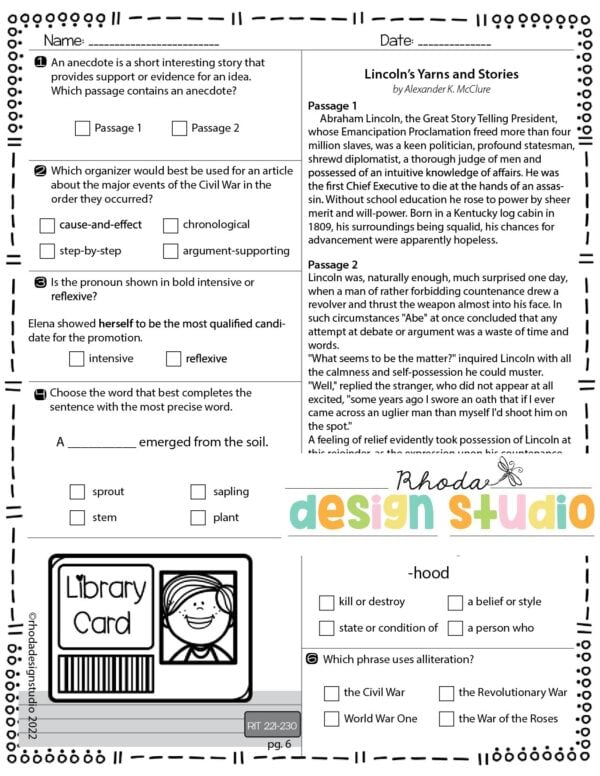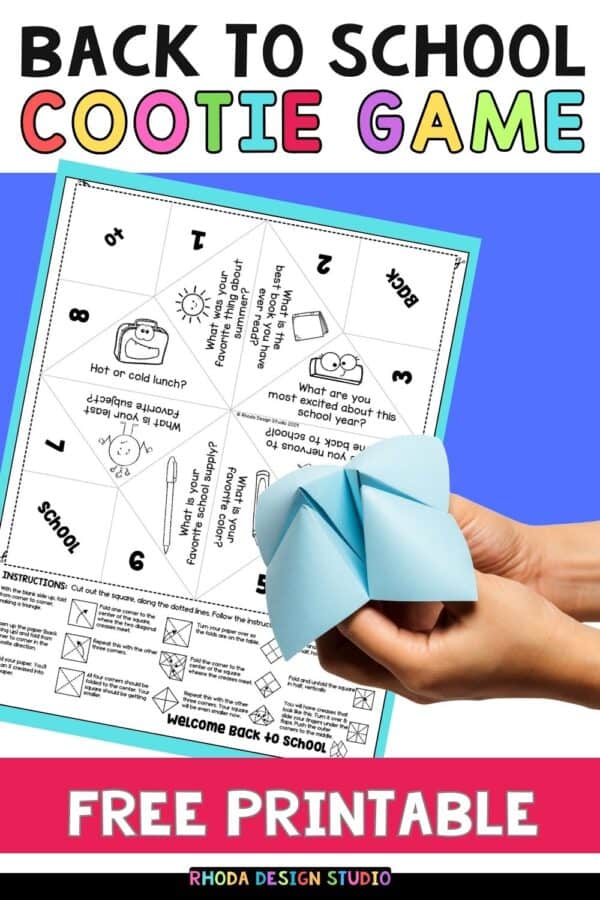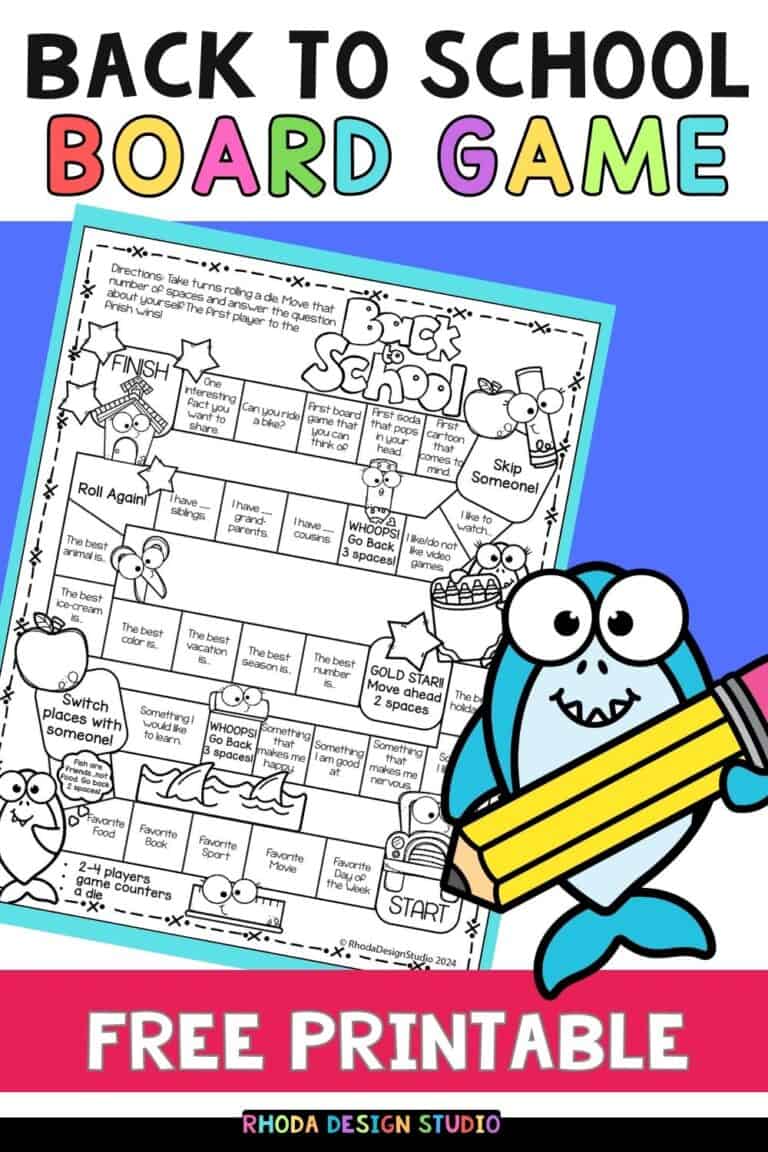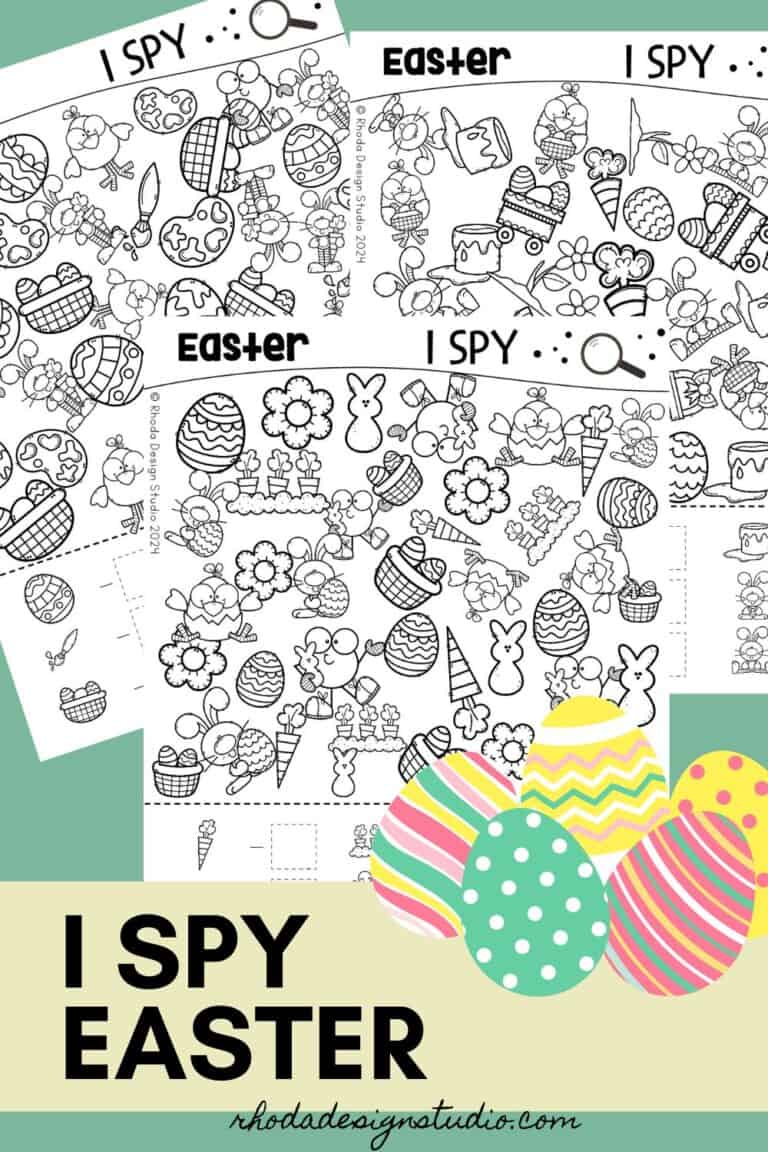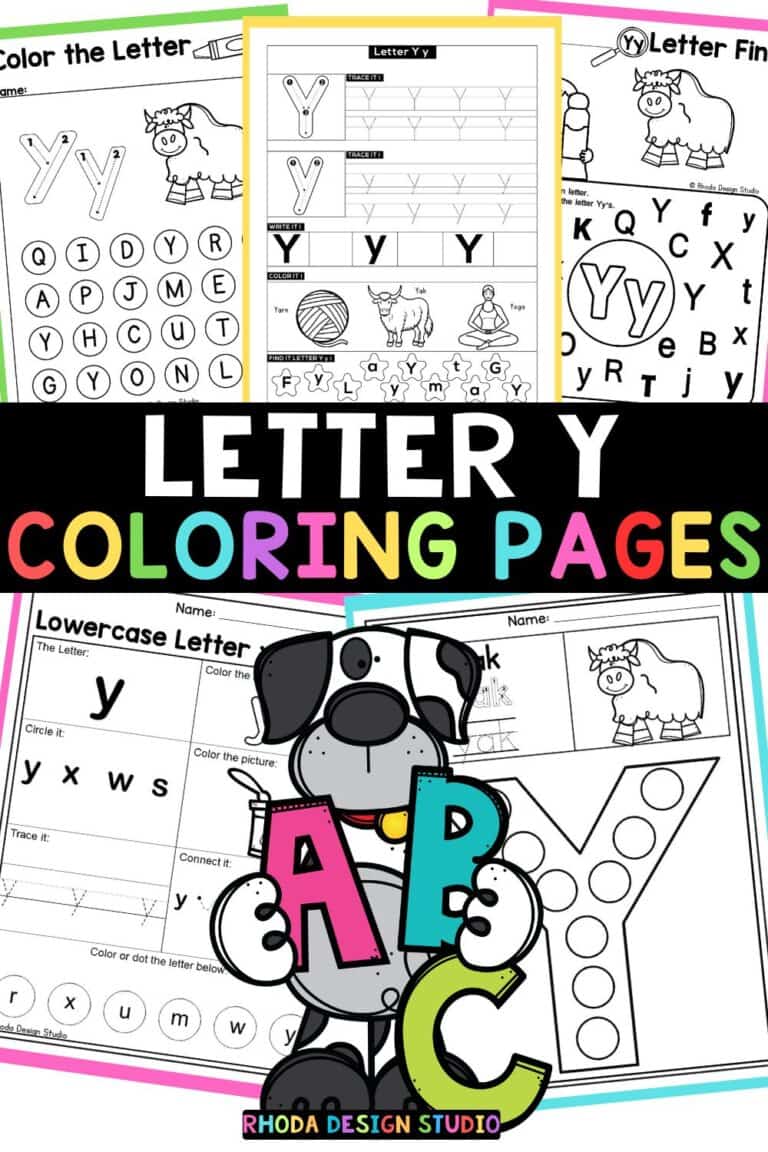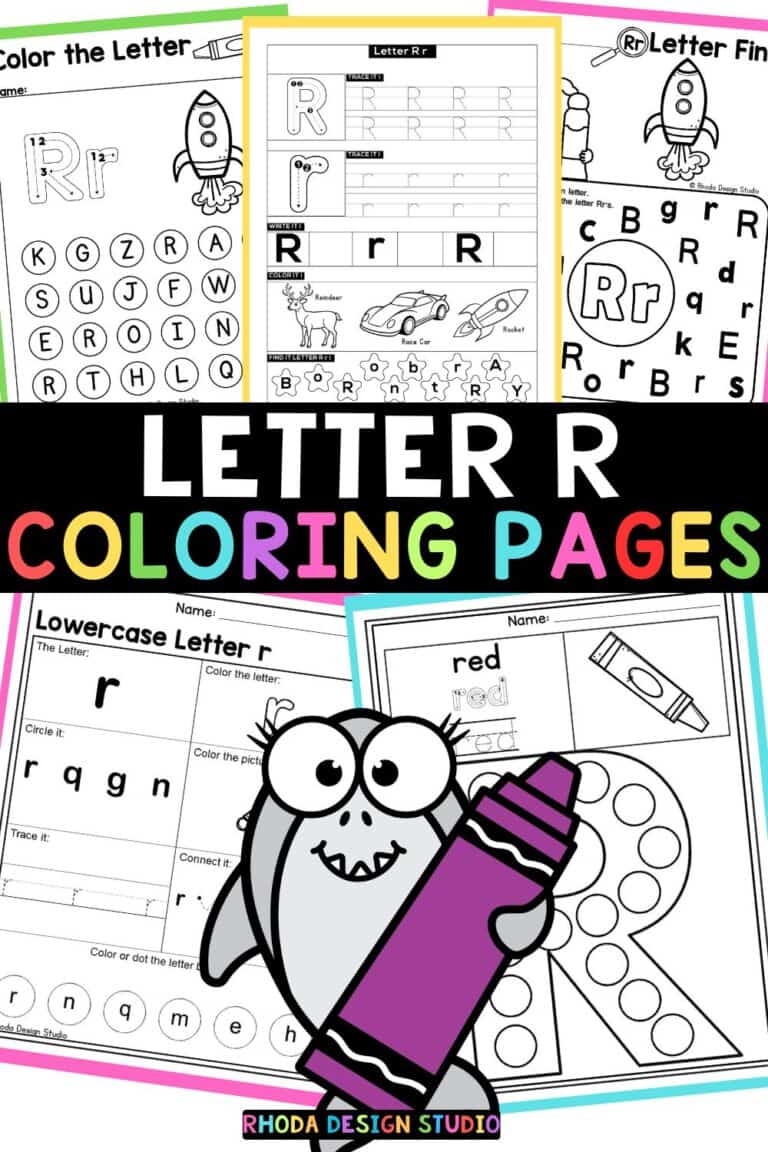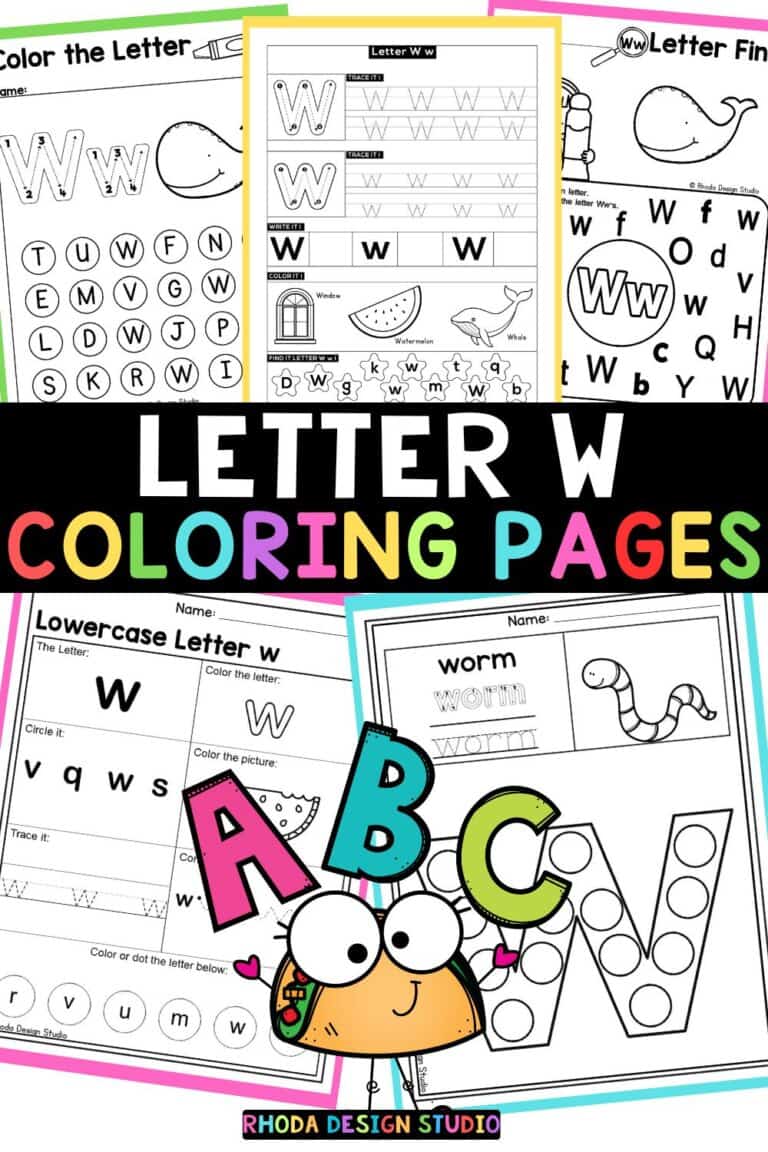Crafting Fun and Learning with Free Back to School Cootie Catchers
Back-to-school season is here, and what better way to welcome it than with a fun and educational craft project? If you’re a parent, teacher, or homeschooler looking for a memorable and interactive activity to engage elementary students, then creating a back-to-school cootie catcher (also known as a fortune teller) is the perfect solution. Not only does this classic paper-folding game provide endless entertainment, but it also offers educational benefits that enhance learning in a playful manner.
In this blog post, we’ll explore the fascinating world of cootie catchers, their history, how they can be used as educational tools, and a step-by-step guide to creating your very own back-to-school themed cootie catcher. By the end, you’ll be ready to craft an unforgettable experience for your students or children.
A Brief History of Cootie Catchers
Cootie catchers, also known as fortune tellers, have been around for generations. Originating as a simple origami project, these paper creations have evolved into a beloved childhood game. Historically, they were used to predict fortunes or share secret messages among friends.
During the mid-20th century, the game became widely popular in schools across the United States. Children would use cootie catchers to make playful predictions about their futures, such as who they might marry or what career they would have. The charm of cootie catchers lies in their simplicity and the joy of discovery they bring.
Why Cootie Catchers Are Perfect for Back to School
Back-to-school season can be both exciting and stressful for students. A cootie catcher offers a fun way to ease those first-day jitters and helps students bond with their peers. Here’s why cootie catchers are a great addition to your back-to-school toolkit:
- Icebreaker Activity: Cootie catchers can serve as a fantastic icebreaker activity for students to get to know each other.
- Educational Tool: They can be customized with educational questions and answers, reinforcing lessons in a fun way.
- Creativity Boost: Crafting cootie catchers encourages creativity and fine motor skills.
The Educational Benefits of Cootie Catchers
You might be surprised to learn that cootie catchers can be more than just a game. They offer several educational benefits:
- Enhancing Fine Motor Skills:
- Folding the paper requires precision and dexterity, which helps students develop their fine motor skills.
- The repetitive motion of folding and manipulating the cootie catcher improves hand-eye coordination.
- Promoting Critical Thinking:
- Customizing the cootie catcher with questions and answers encourages students to think critically.
- Using cootie catchers in lessons can help reinforce concepts and engage students in problem-solving activities.
- Encouraging Social Interaction:
- Playing with cootie catchers encourages social interaction and communication among students.
- They provide a fun way for children to connect, share, and learn from each other.
Materials Needed to Create a Cootie Catcher
Before you start crafting, gather these simple materials:
- A square sheet of paper (8.5×8.5 inches works well)
- Markers or colored pencils
- Scissors (optional, for trimming)
- Stickers or other decorations (optional)
- Printable templates (optional)
These materials are easy to find and inexpensive, making cootie catchers a budget-friendly activity for any classroom or home.
Step-by-Step Guide to Making a Cootie Catcher
Creating a cootie catcher is easier than you might think. Follow these simple steps to make your own:
Step 1: Prepare Your Paper
- Start with a square piece of paper. If you’re using a rectangular sheet, fold one corner diagonally to trim off the excess and create a square.
- Fold the square in half diagonally both ways to create creases. Unfold it back to a square.
Step 2: Fold the Corners
- Fold each corner of the square to the center point where the creases intersect.
- Once all corners are folded in, you should have a smaller square. Flip the paper over.
Step 3: Fold In Again
- Fold the new corners of the smaller square to the center point again.
- After folding all the corners, you will have an even smaller square. Keep it folded.
Step 4: Form the Pockets
- Fold the square in half horizontally and then vertically to create pockets for your fingers.
- Slip your fingers into the pockets underneath the flaps, and your cootie catcher is ready to use.
Math and Literacy Worksheets
GET THEM IN THE SHOP OR FILING CABINET
Love these worksheets?
open the filing cabinet to get even more
Have you ever had the chance to explore a filing cabinet that belongs to a teacher who has taught more than 10 years?
There are so many treasures in there!
I’m sharing all my “filing cabinet goodies” after more than 13 years of teaching and almost 10 years of designing curriculum.
Customizing Your Cootie Catcher for Back to School
Customization is where the fun truly begins. Here are some ideas to personalize your cootie catcher:
Adding Questions and Answers
- Inside Flaps: Write questions on the inside flaps. These could be fun facts, math problems, or spelling words related to the school curriculum.
- Outer Sections: Decorate the outer sections with numbers, colors, or patterns. Each choice leads to a different flap.
Themed Decorations
- Back-to-School Theme: Decorate with school-related images like books, pencils, and apples.
- Personal Touches: Allow students to add their names or favorite subjects to make it uniquely theirs.
Incorporating Learning Opportunities
- Vocabulary: Use new vocabulary words as questions to reinforce language skills.
- Math Problems: Incorporate simple math problems for quick practice.
- Science Facts: Add interesting science facts to spark curiosity.
Engaging Students with Cootie Catchers
Once your cootie catchers are ready, it’s time to put them to use in the classroom or at home. Here are some engaging activities you can try:
Icebreaker Games
- Fun Facts: Have students use their cootie catchers to share fun facts about themselves.
- Get to Know You: Include questions that help students learn more about their classmates, such as favorite hobbies or pets.
Learning Stations
- Reading Corner: Set up a reading station where students use cootie catchers to answer questions about the book they’re reading.
- Math Center: Create a math station with cootie catchers filled with math problems for students to solve.
Homework Helpers
- Review Tool: Encourage students to use their cootie catchers as a review tool for upcoming tests or quizzes.
- Parental Involvement: Send cootie catchers home as a fun and interactive way for parents to engage with their children’s learning.
Building a Community Through Cootie Catchers
Cootie catchers can foster a sense of community and belonging among students. Here’s how:
- Collaborative Projects:
- Have students work in pairs or small groups to create cootie catchers together. This encourages teamwork and collaboration.
- Share finished cootie catchers with the class to celebrate creativity and effort.
- Classroom Displays:
- Create a display area in the classroom where students can showcase their cootie catchers.
- Rotate the display regularly to keep it fresh and exciting.
- Interactive Bulletin Boards:
- Use cootie catchers as interactive elements on bulletin boards. For example, create a “Question of the Week” board with cootie catchers containing different questions for students to answer.
Involving Parents and Guardians
Parents and guardians play a crucial role in their children’s education. Involving them in the cootie catcher activity can strengthen the home-school connection:
- Family Craft Night:
- Host a family craft night where parents and children create cootie catchers together. Provide templates and instructions to make it easy for everyone to participate.
- Encourage parents to ask their children about the questions and answers written inside their cootie catchers.
- Home Learning Activities:
- Send cootie catcher templates home with instructions for parents to use as a learning tool. Include suggestions for questions and themes that align with what students are learning in school.
- Encourage parents to use cootie catchers as conversation starters during mealtime or family gatherings.
- Parent-Teacher Communication:
- Share updates on classroom activities involving cootie catchers through newsletters, emails, or parent-teacher conferences.
- Provide feedback on how students are using cootie catchers to enhance their learning and engagement.
More Back to School Worksheets:
- Apple Frames: Counting to 10
- Best Back to School Teacher Supplies
- Back to School Word Searches
- Back to School Game Board

